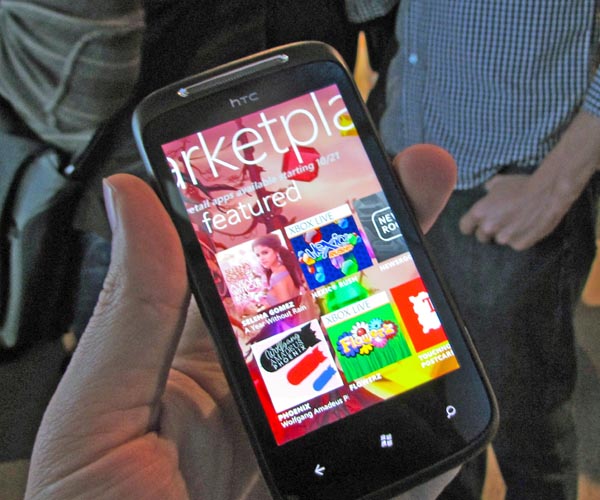 After getting to briefly play with all of the new Windows Phone 7 phones this morning, there was one thing stood out like a Windows 7 shirt in an Apple Store – the handsets were like identical quintuplets. Each handset has a few minor cosmetic differences but from a distance, they all looked exactly the same.
After getting to briefly play with all of the new Windows Phone 7 phones this morning, there was one thing stood out like a Windows 7 shirt in an Apple Store – the handsets were like identical quintuplets. Each handset has a few minor cosmetic differences but from a distance, they all looked exactly the same.
What’s even more interesting is that this is an intentional design factor on Microsoft’s part. With the possible exception of the LG Optimus 7 Q, with it’s slide out keyboard, all the phones are touchscreen devices of a similar size, shape and weight. There are a few minor differences in terms of camera resolution, and the Omnia 7’s Super AMOLED screen is far more vibrant than the others, but otherwise they all look almost identical.
But it’s when you actually use each device that you realise that they ARE almost identical. Microsoft has decreed that unlike previous versions of WinMo, carriers and manufacturers can’t skin the UI with their own creation like they can with Android. So instead, they’ve opted to create custom tiles – which can be added or removed from the front page as you see fit.
The effect of this decree is that we now have a platform that offers multiple handsets from a range of manufacturers, without the horrible fragmentation of various operating system versions that’s currently plaguing Android owners. Or put another way, an iPhone ecosystem with Android hardware options.
Some people may hate that, but from my early experience with the platform, it actually works quite well. Microsoft confirmed today that they will be rolling out firmware updates, not manufacturers or carriers, meaning everyone will get the inevitable “cut-and-paste” update when they eventually launch it. We won’t see the current situation with the Telstra Desire replicated on WP7 – where users are waiting for the update because the carrier is delaying its rollout.
It also means that because all the phones pretty much look and feel the same, the pressure is on carriers to provide attractive deals and useful content to customers. Although I’m generally pretty critical of the “bundled” software on handsets, I have to admit that the Telstra tile on the HTC Mozart I played with worked well, offering a selection of content in a way I’d actually consider reading it.
Obviously, as time goes on and we start to see more WP7 hardware, form factors will develop as manufacturers try and stand apart from the crowd. But for the launch period especially, there’s very little between the five Windows Phone 7 handsets. Which isn’t such a bad thing.